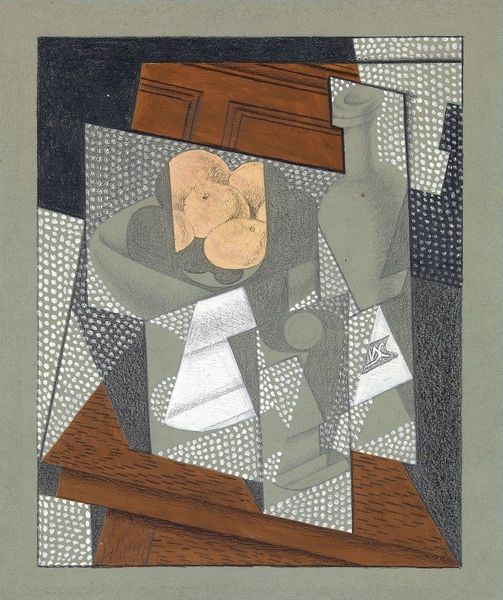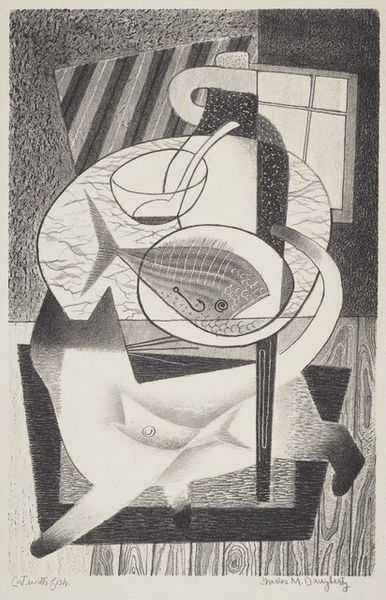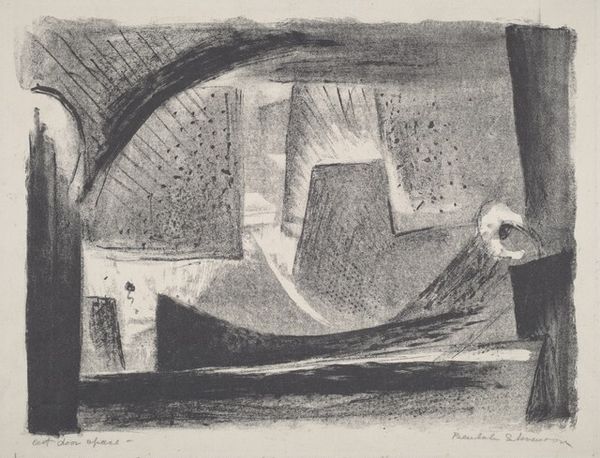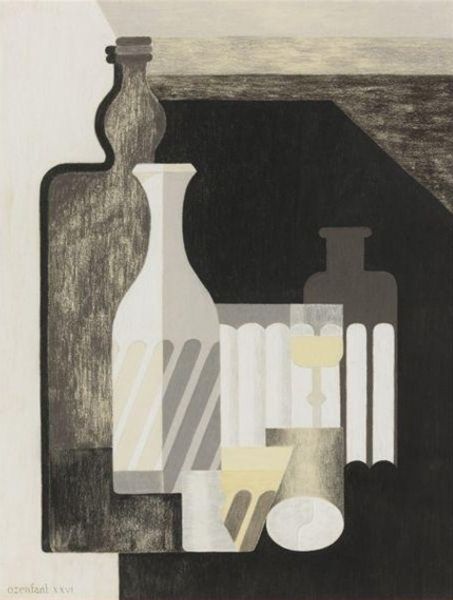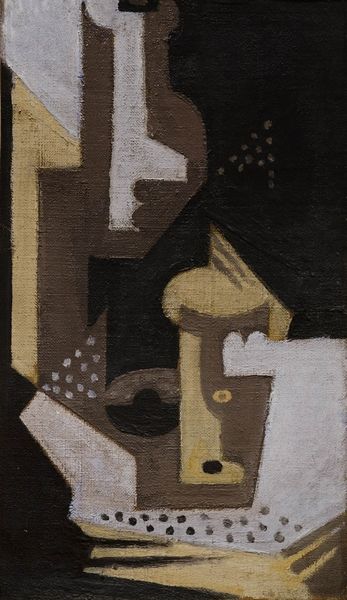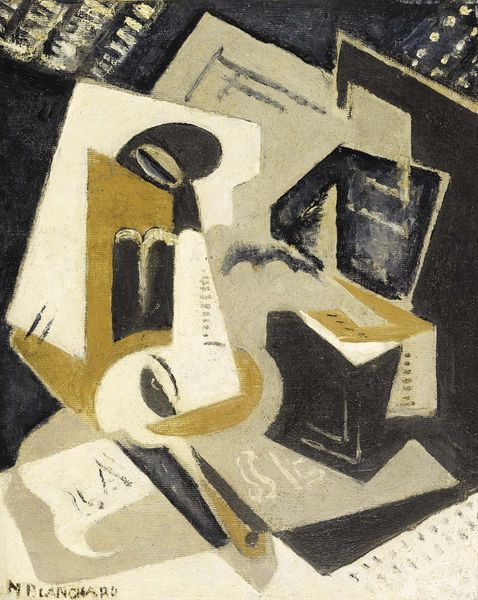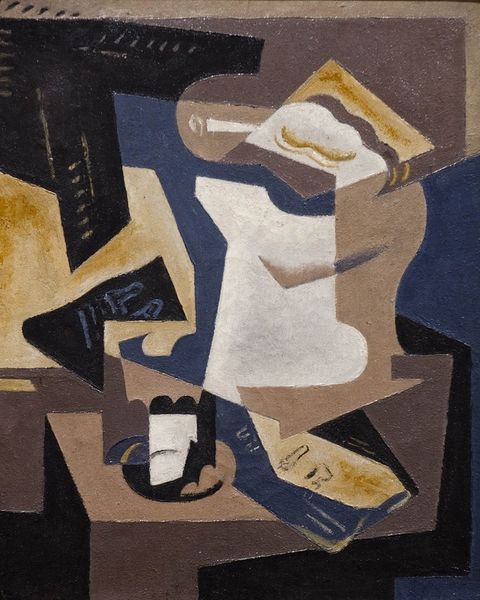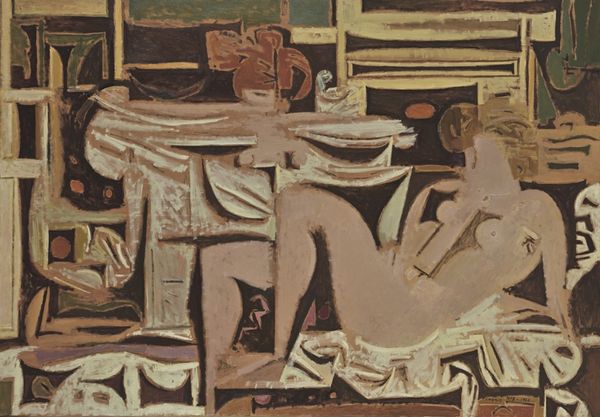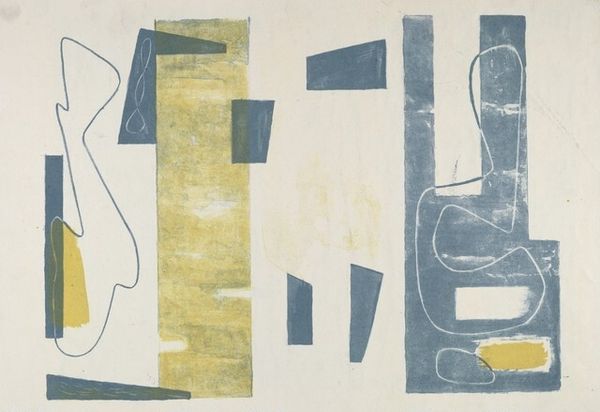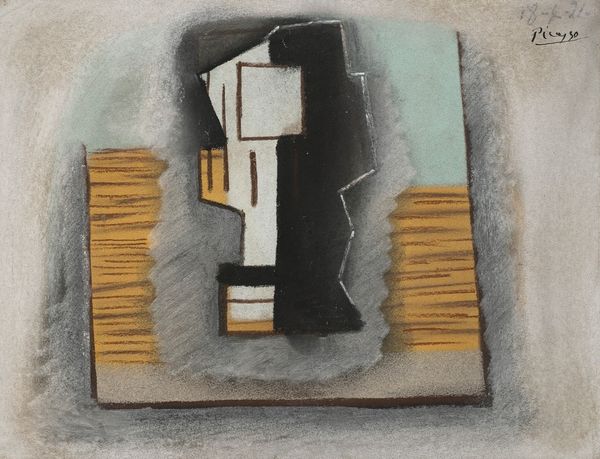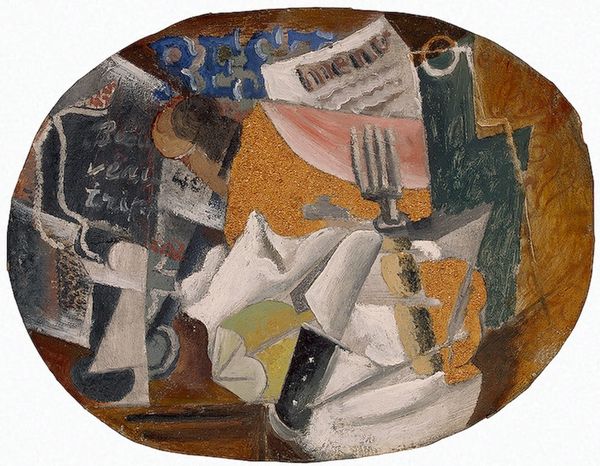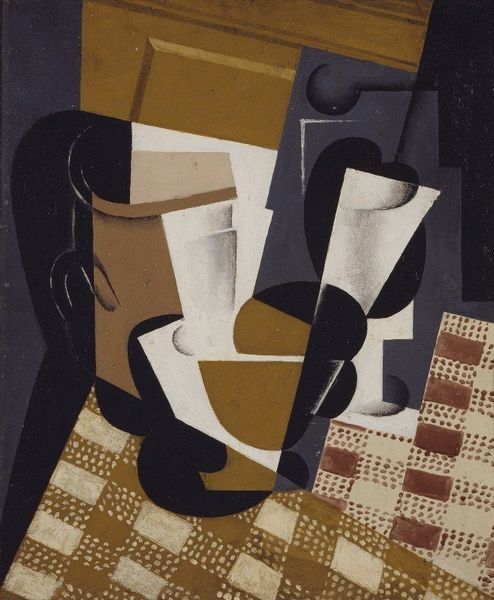
#
sculpture
#
charcoal drawing
#
sculptural image
#
possibly oil pastel
#
charcoal art
#
oil painting
#
unrealistic statue
#
acrylic on canvas
#
underpainting
#
3d art
Dimensions: overall (oval): 19.05 × 24.13 cm (7 1/2 × 9 1/2 in.) framed: 24.45 × 33.02 cm (9 5/8 × 13 in.)
Copyright: National Gallery of Art: CC0 1.0
Editor: So this is Picasso's "A Glass on a Table" from 1913. It's striking how he almost sculpts the scene onto the canvas. It really challenges how we perceive a simple object. What are your thoughts on the role this painting plays within his larger body of work and the broader cultural landscape? Curator: It's a powerful piece, especially when viewed within the context of early 20th-century artistic and social upheaval. The Cubist fragmentation directly challenges academic traditions that prioritize realistic depiction. This wasn't merely about *representing* a glass; it was about presenting multiple perspectives, a kind of fourth dimension that mirrored the burgeoning philosophical explorations into relativity and consciousness. Do you think the limited color palette plays a role in emphasizing its intellectual, rather than purely aesthetic, function? Editor: Absolutely. By muting the colors, it steers clear of being merely decorative. It really forces you to consider the *idea* of a glass, instead of just seeing it. How do you think its initial reception shaped the trajectory of modern art? Curator: Initially, works like this were quite polarizing. Many found them inaccessible, even absurd. But its rebellious spirit fueled a generation of artists eager to break from the past. "A Glass on a Table," through its radical reinterpretation of form, subtly challenged established power structures within the art world and, by extension, society itself. It democratized representation, suggesting that reality wasn't fixed but subject to interpretation, a notion with profound political implications. Editor: That makes total sense! I had considered its revolutionary art perspective, but didn’t make that direct connection to the prevailing political winds. This was truly insightful! Curator: Precisely! And considering its continuing influence on visual culture, one can certainly state it retains much the same social power even now.
Comments
No comments
Be the first to comment and join the conversation on the ultimate creative platform.
